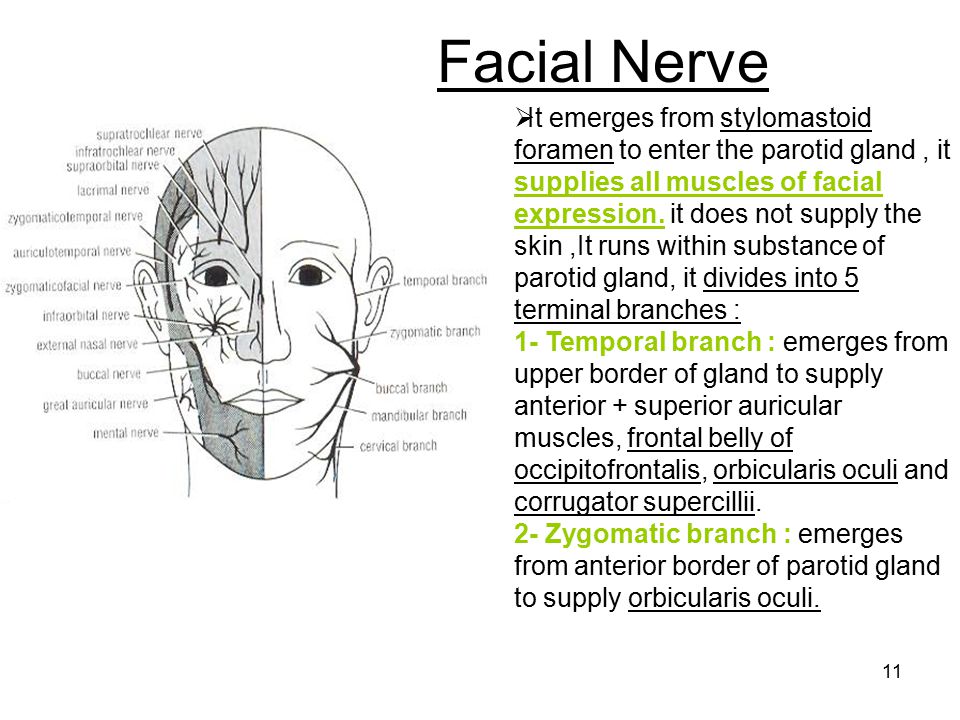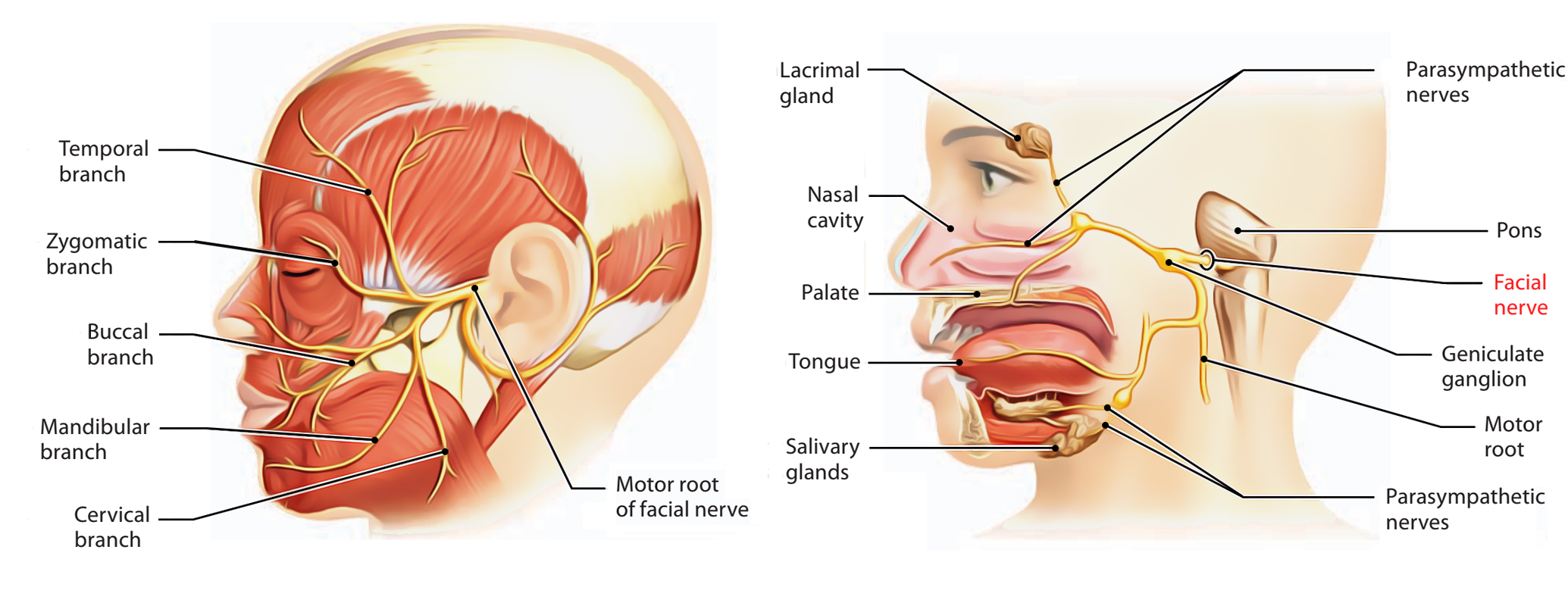Tongue is one of the most powerful muscle of the body and the movements of tongue are very important in speaking and swallowing or deglutation of food and the movements of tongue are controlled by Intrinsic and Extrinsic muscles.

Facial Nerve Disorders – Paralysis and Bell’s Palsy. Face injuries and disorders can cause pain and affect how you look. In severe cases, they can affect sight, speech, breathing and your ability to swallow.
The facial nerve is one of the key cranial nerves with a complex and broad range of functions. Although at first glance it is the motor nerve of facial expression which begins as a trunk and emerges from the parotid gland as five branches (see f

Michigan Ear Institute has been at the forefront in developing treatment modalities for facial nerve dysfunction including Bell’s palsy and traumatic facial nerve paralysis.
The facial muscles are a group of striated skeletal muscles supplied by the facial nerve (cranial nerve VII) that, among other things, control facial expression. These muscles are also called mimetic muscles.
Femoral nerve damage can be due to a direct trauma or as a consequence of a disease or an iatrogenic cause. Weakness and instability of the knee while climbing stairs, weak thigh muscles include the symptoms.
The trigeminal nerve is the largest cranial nerve and is the great sensory nerve of the head and face, and the motor nerve of the muscles of mastication. 1 Its roots are three in number, and enter its posterior border. One, the long or sensory root, is derived from the nasociliary nerve, and joins
Embryology of the facial nerve Weeks 0-4-3rd wk : facioacoustic (acousticofacial) primordium -4th wk : chorda tympani nerve exits rostrally and courses ventrally to the first pharyngeal pouch to enter



You are here: Home / Oral Surgery / Facial Nerve Paralysis or Paresis due to Local Anesthesia (LA Complication) – Cause, Management

Branches. The superficial branches run beneath the skin and above the superficial muscles of the face, which they supply: some are distributed to the Procerus, joining at the medial angle of the orbit with the infratrochlear and …



